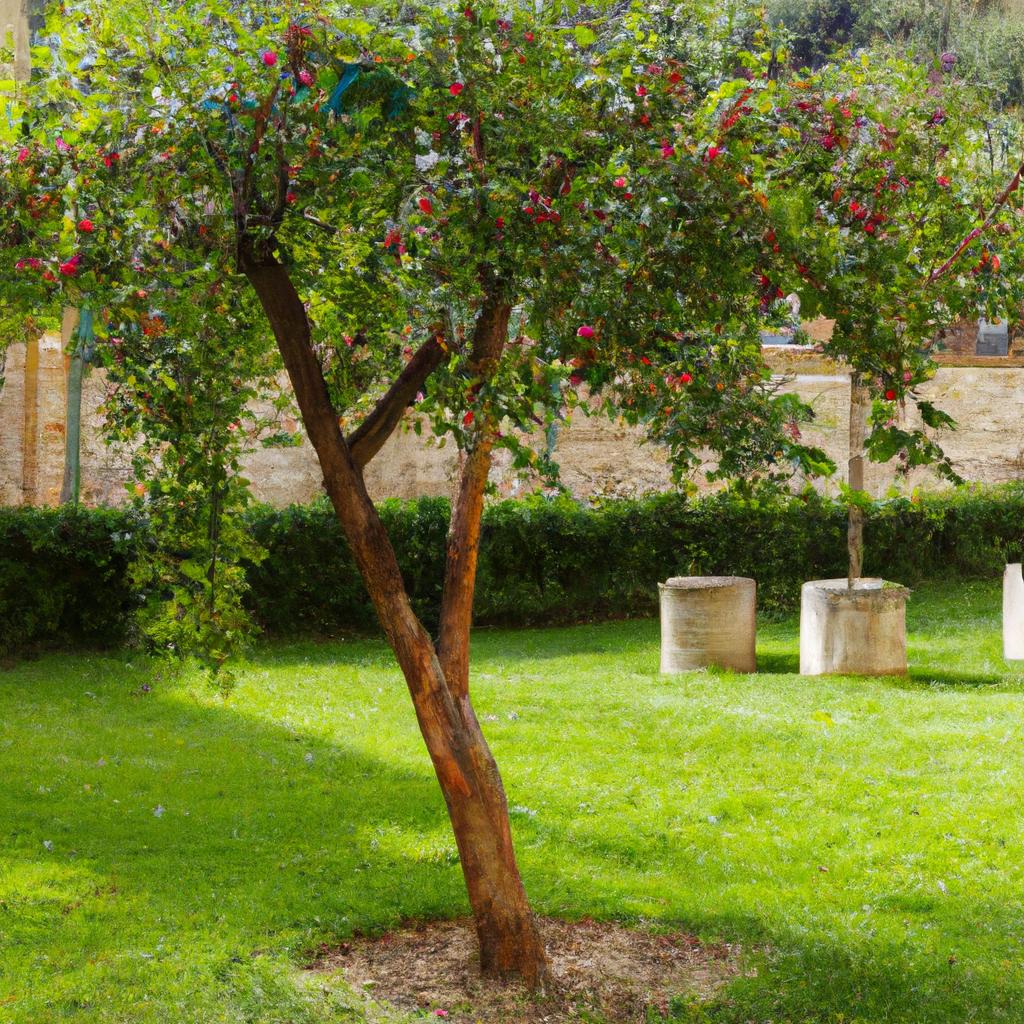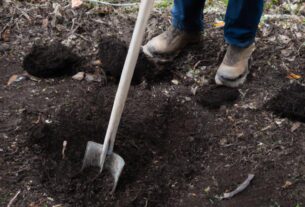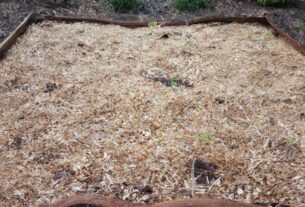Are you tired of buying expensive fruits from the grocery store that never seem to be fresh and juicy? Why not consider growing your own fruit trees in your garden? Not only will this provide you with a steady supply of fresh, organic fruits, but it will also add beauty and value to your property. In this article, we will discuss the steps required to successfully grow your own fruit trees.
Choosing the Right Fruit Tree
The first step in growing your own fruit trees is selecting the right type that suits your garden’s climate and soil conditions. Consider factors such as the tree’s hardiness, size at maturity, and the type of fruit it produces.
It’s crucial to choose a variety of fruit tree that can thrive in your region’s climate. For example, if you live in a colder area, apple or pear trees would be ideal options since they require a period of cold dormancy to produce fruit.
The size of the tree at maturity is also important, especially if you have limited garden space. Choose dwarf or semi-dwarf fruit trees that require less space to grow.
Lastly, consider the type of fruit you want to grow. Common fruit trees for beginners include apple, pear, cherry, peach, and plum trees. Research different varieties to determine which one will work best for you.
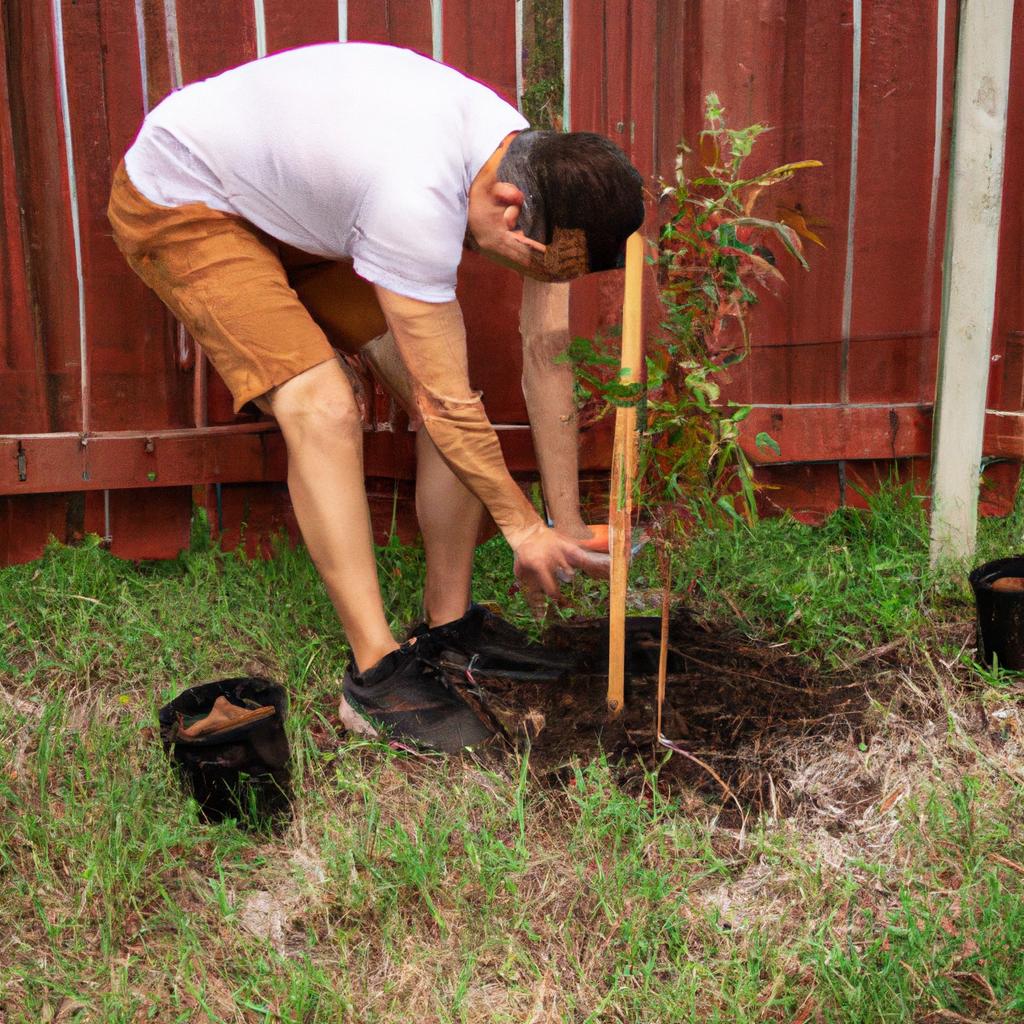
Once you’ve selected your fruit tree, it’s time to prepare your garden for planting.
Planting and Caring for Fruit Trees
Before planting your fruit tree, it’s essential to prepare the planting site correctly. Choose a location that receives at least six hours of direct sunlight per day and has good drainage. Dig a hole deep enough to accommodate the tree’s root ball and wide enough for proper root growth.
When planting the tree, make sure the graft union is above the soil surface. Water the tree thoroughly and apply a layer of mulch around the base to retain moisture.
Proper care is crucial to ensure the growth and health of your fruit tree. Regular watering, fertilization, and pruning are necessary to keep your tree healthy and productive.
Water your fruit tree regularly, especially during hot and dry periods. Follow the manufacturer’s instructions for fertilization or consult with a local nursery for guidance. Prune your fruit tree annually to remove any dead or diseased branches, promote proper growth, and increase fruit production.
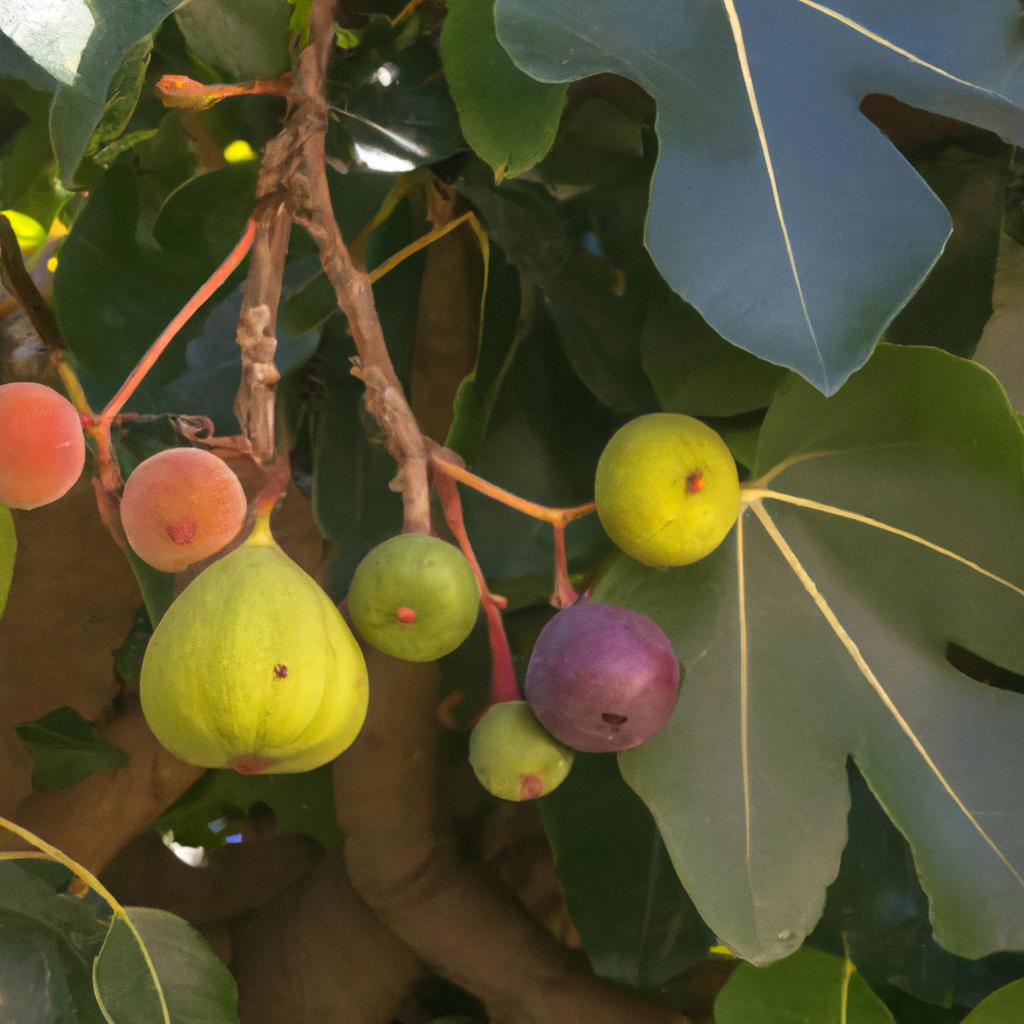
By following these steps, you can successfully grow a healthy and productive fruit tree in your garden. In the next section, we will discuss pruning and training fruit trees for optimal growth and yield.
Pruning and Training Fruit Trees
Pruning and training are essential techniques to ensure the optimal growth and yield of your fruit tree. Pruning involves removing specific branches or parts of the tree to encourage new growth and increase fruit production. Training involves shaping the tree’s growth pattern to improve its overall structure and fruit quality.
Importance of Pruning and Training Fruit Trees
Pruning and training fruit trees are crucial for several reasons. Firstly, it helps maintain the tree’s overall health by removing dead, diseased, or damaged branches. Secondly, pruning and training can increase fruit production by promoting new growth and improving light penetration to the tree’s center. Lastly, properly pruned and trained trees are more aesthetically pleasing and can improve the appearance of your garden.
Techniques for Pruning Fruit Trees
Pruning fruit trees can be intimidating, but with the proper techniques, it can be done successfully. The best time to prune fruit trees is during the dormant season, typically in late winter or early spring.
Start by removing any dead, diseased, or damaged branches. Next, eliminate any branches that are crossing or rubbing against each other, as they can cause damage and reduce fruit production. Finally, thin out the tree’s interior branches to improve airflow and light penetration.
It’s crucial to use clean, sharp tools when pruning your fruit tree. Avoid leaving any ragged cuts or removing large sections of the tree at once.
Training Fruit Trees for Optimal Growth and Yield
Training your fruit tree involves shaping its growth pattern to improve its overall structure and fruit quality. The goal is to create a strong, balanced framework that can support the tree’s fruit production.
Begin by selecting a central leader branch and removing any competing branches. Next, identify four to six scaffold branches that will form the tree’s main framework. These branches should be evenly spaced around the trunk and at a 45-degree angle to the ground.
As the tree grows, prune any competing branches and tie the scaffold branches to supporting stakes to promote upright growth. Over time, the scaffold branches will become stronger, and the tree will require less support.
By pruning and training your fruit tree regularly, you can ensure optimal growth and yield, and a healthy, productive tree for years to come.
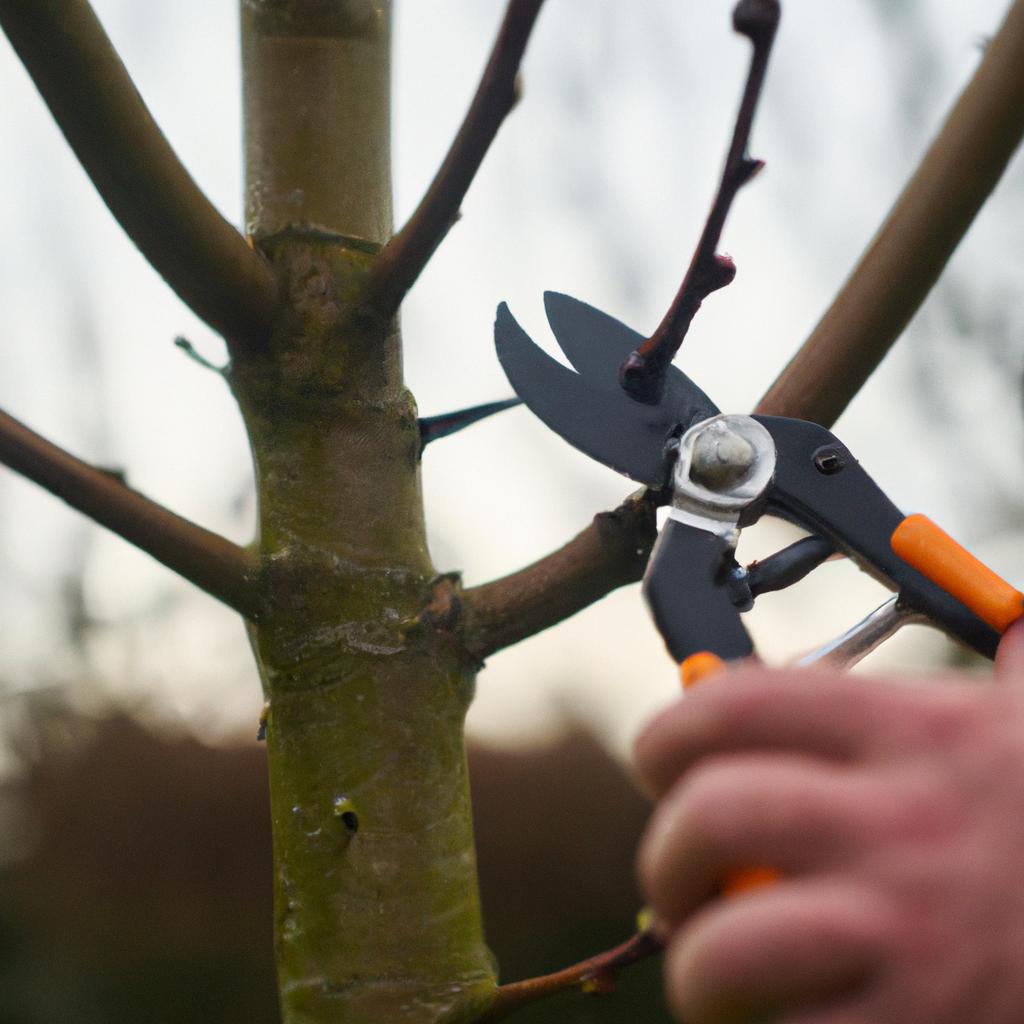
In the next section, we will discuss harvesting and storing your fruit.
Harvesting and Storing Fruit Trees
After months of hard work, it’s finally time to harvest your fruit tree. Timing is crucial when it comes to harvesting fruit, as picking it too early or too late can affect its taste and quality.
Timing of Fruit Tree Harvesting
Different types of fruit have varying harvesting times. For example, apples are typically harvested in the fall when they are fully ripe, while peaches and plums are harvested in the summer when they are slightly underripe.
To determine if your fruit is ready for harvest, look for visual cues such as color, texture, and size, and gently twist the fruit. If it comes off the tree easily, it’s ready to be harvested.
Proper Techniques for Harvesting Fruit
When harvesting fruit, handle it gently to avoid bruising or damaging it. Use a pair of pruning shears or a sharp knife to cut the fruit from the tree, leaving a small stem attached.
Avoid pulling the fruit off the tree, as this can damage the fruit and the tree’s branches. After harvesting, sort the fruit by size and quality and discard any damaged or overripe fruit.
Tips for Storing and Preserving Fruit
Proper storage is essential to preserve the flavor and quality of your harvested fruit. Store your fruit in a cool, dry place, such as a refrigerator or a cool basement. Avoid storing fruit near any sources of heat or direct sunlight, as this can cause it to ripen too quickly or spoil.
You can also preserve your fruit by canning, freezing, or drying it. Canning involves cooking the fruit and sealing it in a jar, while freezing involves blanching the fruit and storing it in the freezer. Drying involves removing the fruit’s moisture by exposing it to low heat and air.
By following these tips, you can ensure that your harvested fruit stays fresh and delicious for as long as possible.
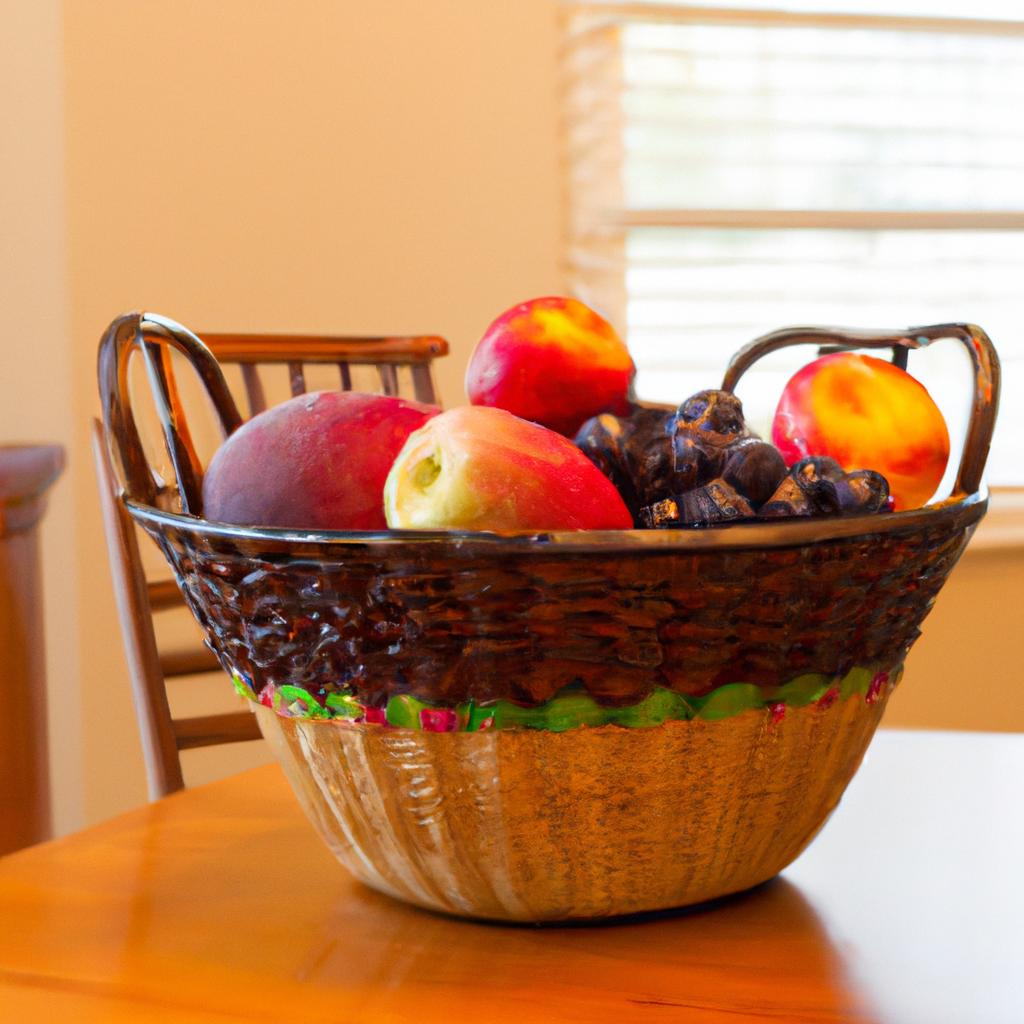
In the next section, we will discuss common fruit tree problems and how to troubleshoot them.
Troubleshooting Common Fruit Tree Problems
Fruit trees are susceptible to various problems, including pests and diseases. Identifying these problems early on and taking steps to prevent and treat them is essential to ensure the health and productivity of your fruit tree.
Common fruit tree problems include pests such as aphids, fruit flies, and mites, as well as diseases such as powdery mildew and fire blight. Prevention measures such as regular pruning, proper watering, and fertilization can help prevent these problems.
If you notice a problem, take action as soon as possible. There are many organic and chemical treatments available to treat fruit tree problems, but it’s important to choose the right treatment for your specific issue. In some cases, it may be necessary to seek professional help from a local nursery or arborist.
By following these steps, you can successfully grow and maintain healthy and productive fruit trees in your garden. Don’t be afraid to experiment with different fruit tree varieties and techniques to find what works best for you. Happy gardening!
In conclusion, growing your own fruit trees is a rewarding and sustainable way to provide fresh fruits for you and your family. At TooLacks, we encourage our readers to explore the world of gardening and embrace the benefits of growing your own food.
